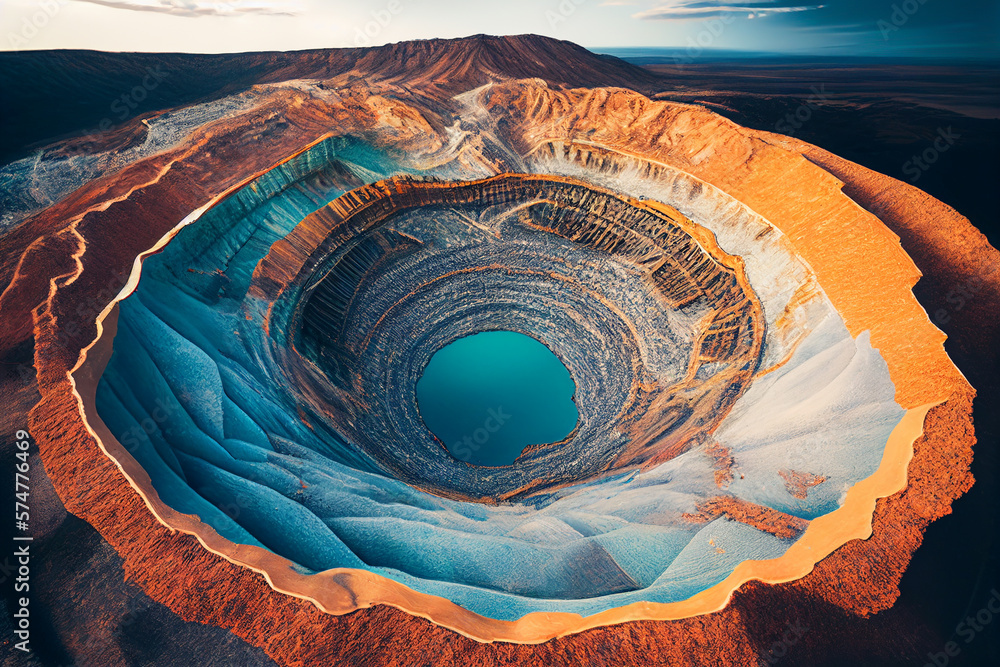Mineral resources are naturally occurring substances that are extracted for their economic value and are essential to various industries, technologies, and daily life. From the metals used in electronics to the aggregates that form the foundations of our buildings, mineral resources play a critical role in the development and sustainability of modern civilization. This article explores the types of mineral resources, their importance, methods of extraction, and the challenges facing the industry.
Types of Mineral Resources
Mineral resources can be broadly categorized into two types: metallic minerals and non-metallic minerals.
- Metallic Minerals: These minerals are typically hard and lustrous and are known for their conductivity and malleability. Key examples include:
- Gold: Used in electronics, jewelry, and as an investment.
- Copper: Essential for electrical wiring, plumbing, and construction.
- Aluminum: Widely used in packaging, transportation, and construction due to its lightweight properties.
- Iron: A primary component in steel production, vital for infrastructure and manufacturing.
- Non-Metallic Minerals: These minerals do not possess metallic characteristics but are critical for various applications. Examples include:
- Limestone: Used in cement production, construction, and as a soil conditioner.
- Clay: Important in ceramics, bricks, and cement.
- Gypsum: Used in drywall and as a soil amendment.
- Sand and Gravel: Key materials for construction, road building, and concrete production.
Importance of Mineral Resources
Mineral resources are integral to economic development and societal well-being:
- Economic Growth: The extraction and processing of minerals contribute significantly to the GDP of many countries. They create jobs, stimulate local economies, and support industries.
- Technological Advancements: Minerals are essential for high-tech industries, including electronics, renewable energy, and telecommunications. For instance, rare earth elements are crucial for manufacturing batteries and electronics.
- Infrastructure Development: Minerals are foundational to building infrastructure—roads, bridges, and buildings—all of which are necessary for societal function and growth.
- Energy Production: Minerals such as coal, uranium, and natural gas are vital for energy production, supporting everything from electricity generation to transportation.
Methods of Extraction
The methods of extracting mineral resources vary based on the type of mineral and its location. Common techniques include:
- Mining: This encompasses several methods, including:
- Open-Pit Mining: Used for minerals located near the surface, where a large pit is excavated.
- Underground Mining: Employed when minerals are deeper, involving tunneling to reach deposits.
- Quarrying: Primarily for non-metallic minerals like limestone and granite, this method involves removing large blocks of stone from the earth.
- Alluvial Mining: This technique extracts minerals from riverbeds or stream beds, typically used for gold and gemstones.
- Placer Mining: Similar to alluvial mining, this method involves extracting minerals from sedimentary deposits.
Challenges Facing the Industry
Despite the importance of mineral resources, the industry faces several challenges:
- Environmental Impact: Mining activities can lead to habitat destruction, soil erosion, and pollution of air and water. Sustainable practices are essential to mitigate these impacts.
- Resource Depletion: Many mineral resources are finite, and over-extraction can lead to shortages. Recycling and sustainable management practices are crucial for prolonging resource availability.
- Social Issues: Mining can lead to community displacement and conflicts over land use. Ensuring that local communities benefit from mineral extraction is vital for social sustainability.
- Regulatory Challenges: Navigating the complex web of regulations and permitting processes can be a significant hurdle for mining companies.
Innovations and Future Directions
The mineral resource industry is evolving, with a focus on sustainability and innovation:
- Recycling and Circular Economy: Increasing emphasis on recycling minerals to reduce the need for new extraction. For example, metal recycling can significantly reduce energy use and environmental impact.
- Sustainable Mining Practices: Many companies are adopting technologies and practices that minimize environmental damage, such as reducing water usage and restoring mined land.
- Advanced Technologies: Innovations like automation, remote sensing, and artificial intelligence are enhancing exploration and extraction efficiency while reducing environmental footprints.
- Responsible Sourcing Initiatives: Efforts to ensure that minerals are sourced ethically and sustainably, considering the social and environmental implications of mining.
Conclusion
Mineral resources are vital to our modern world, underpinning economic growth, technological advancement, and infrastructure development. As we navigate the challenges associated with resource extraction, it is imperative to embrace sustainable practices and innovations that minimize environmental impact while ensuring that the benefits of mineral resources are shared equitably. By fostering responsible management of these resources, we can support a resilient future for both our economy and the planet.



